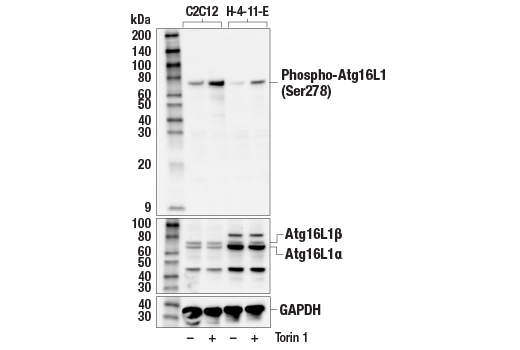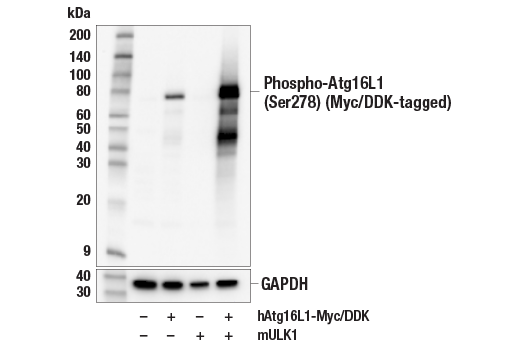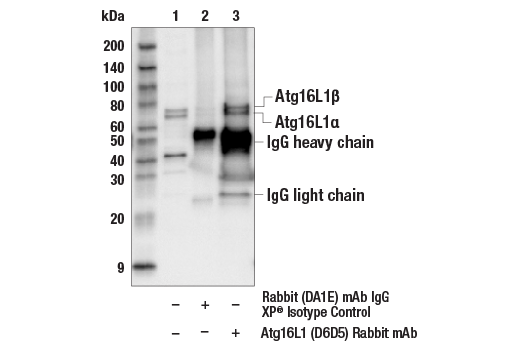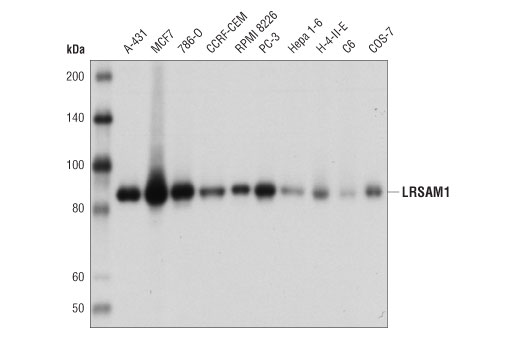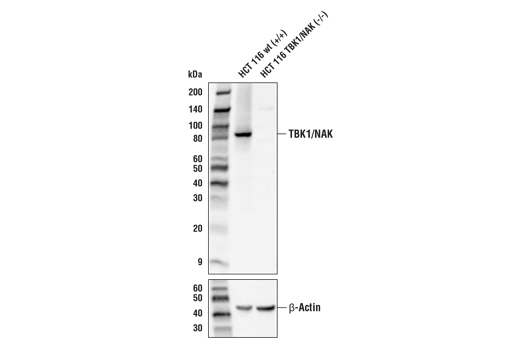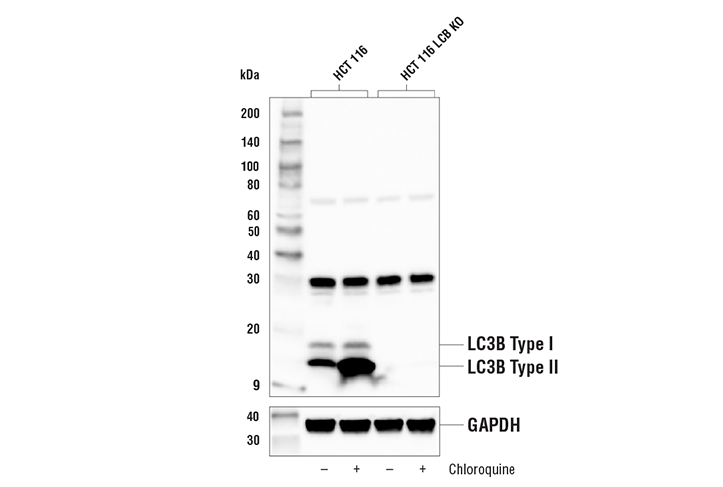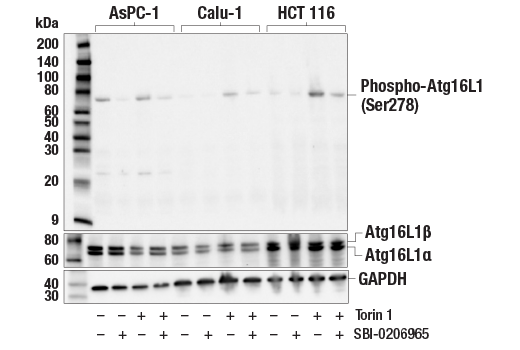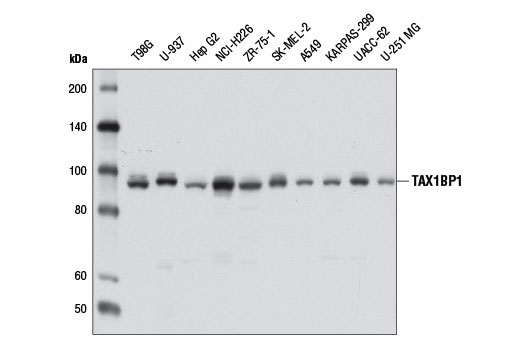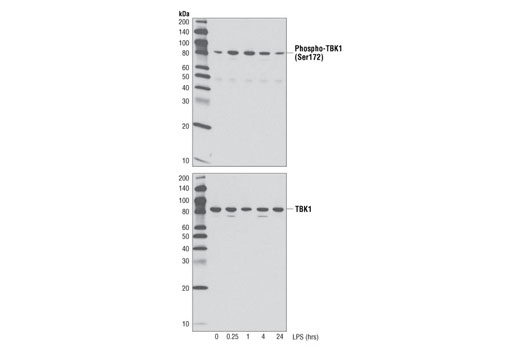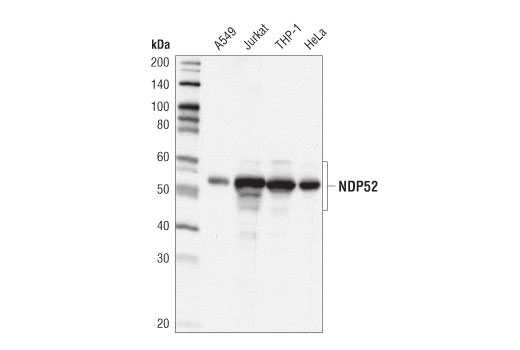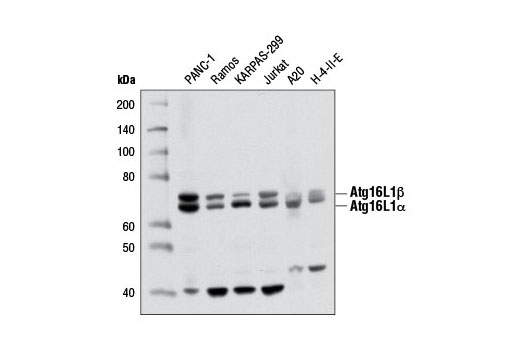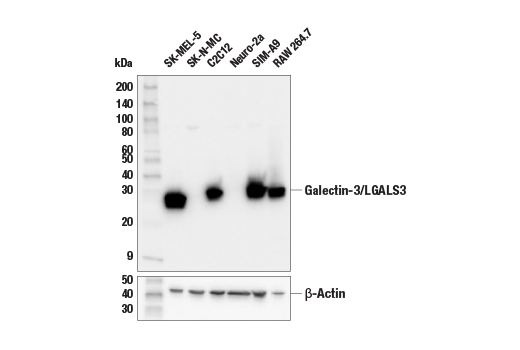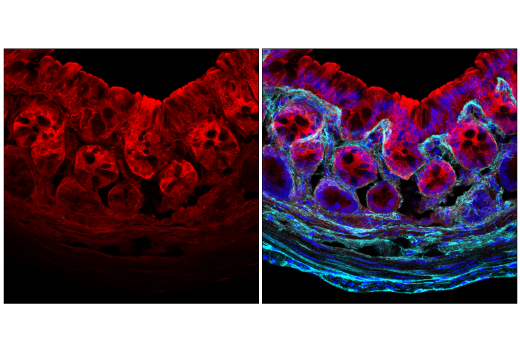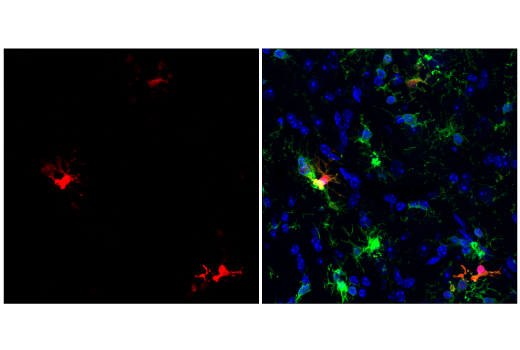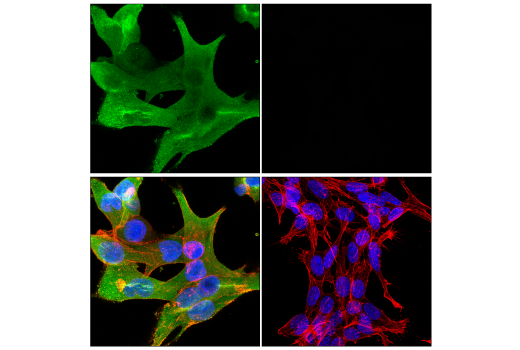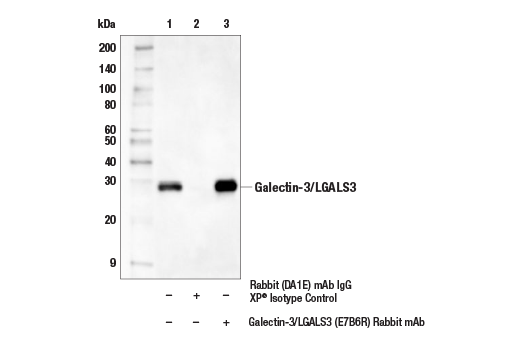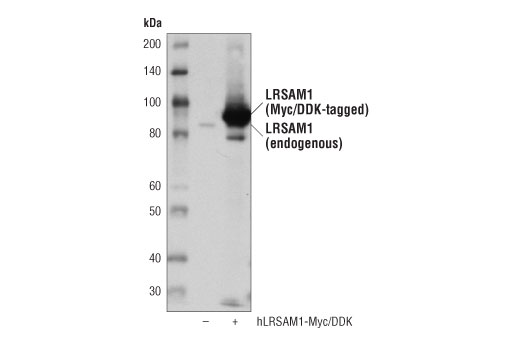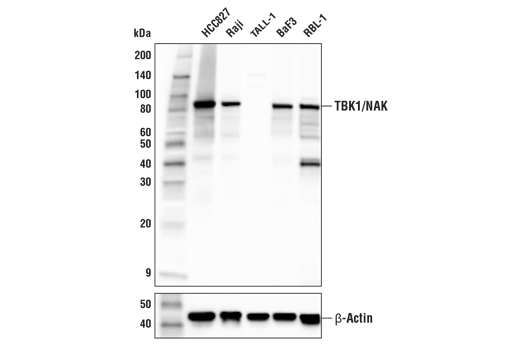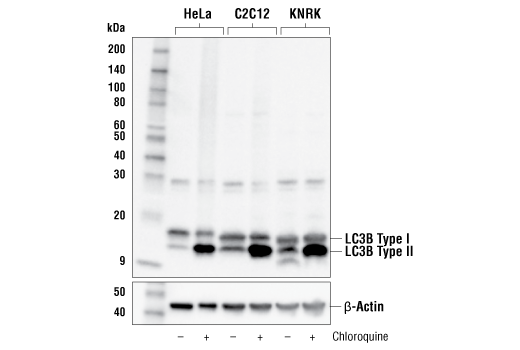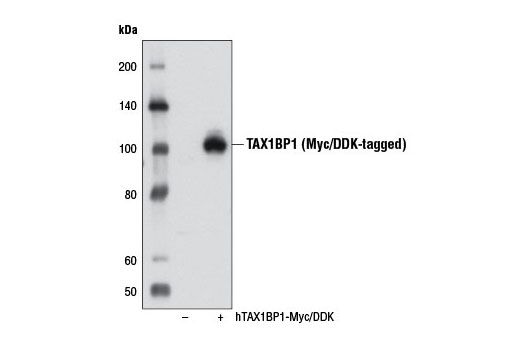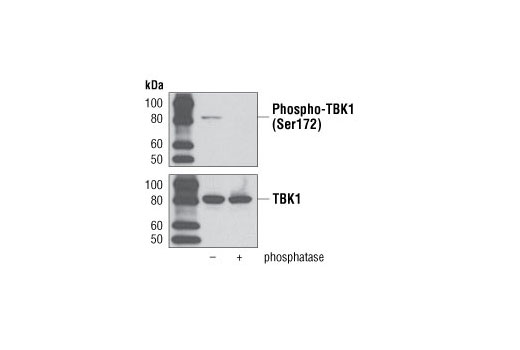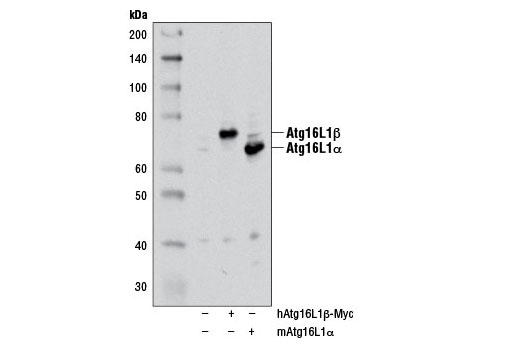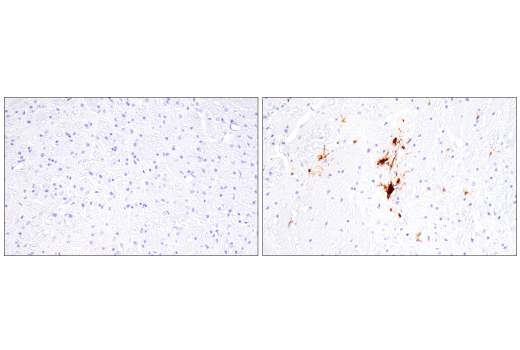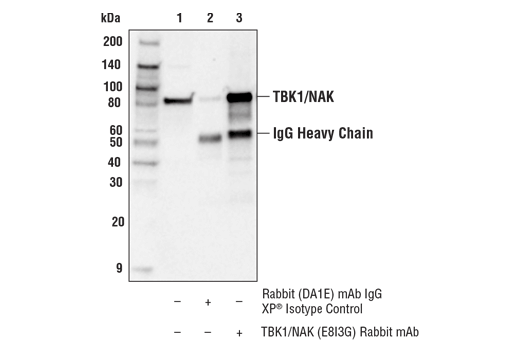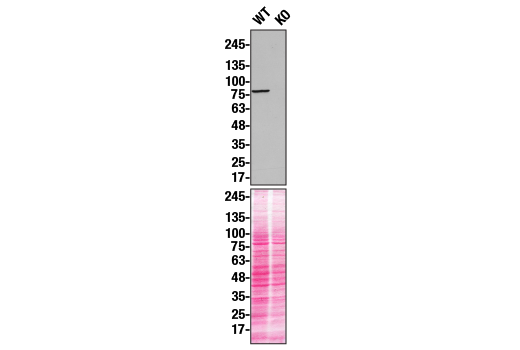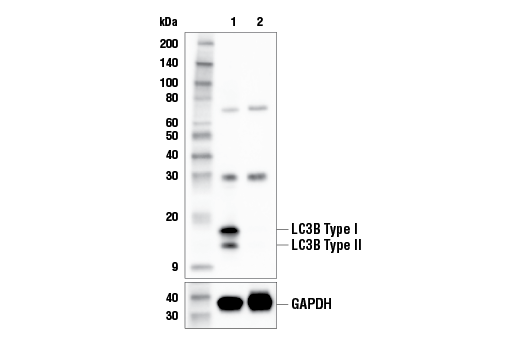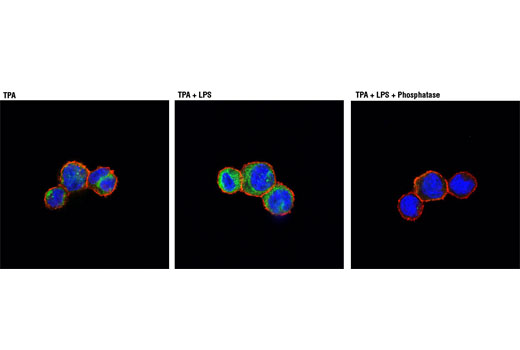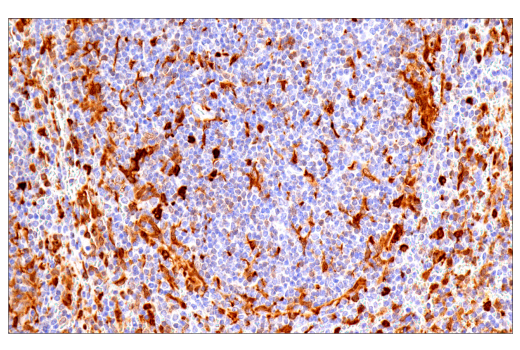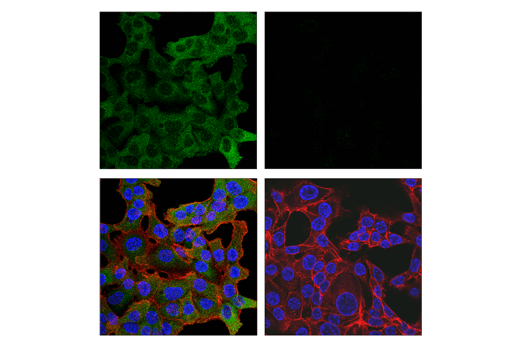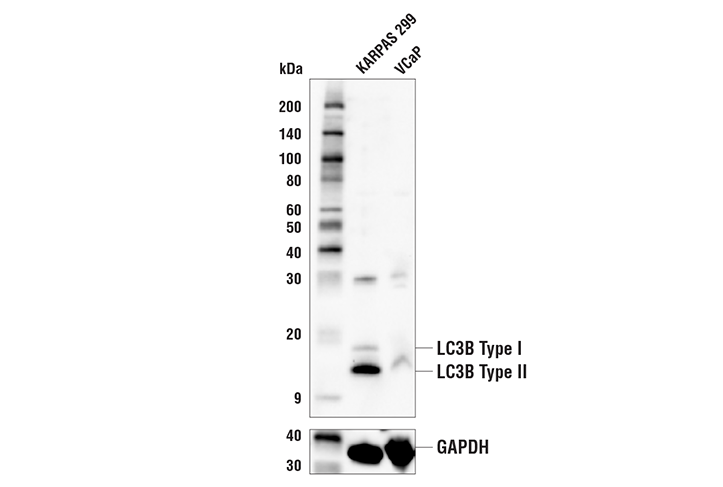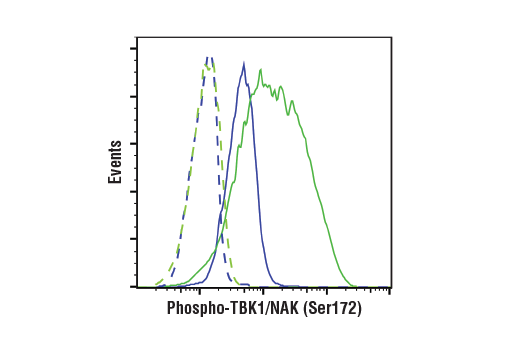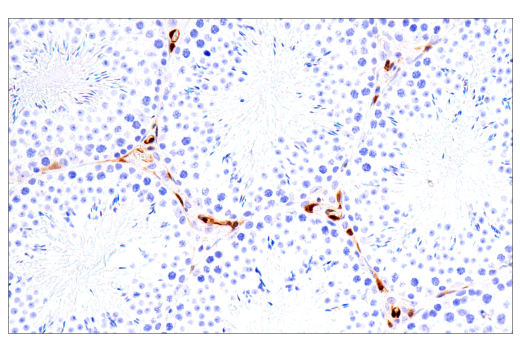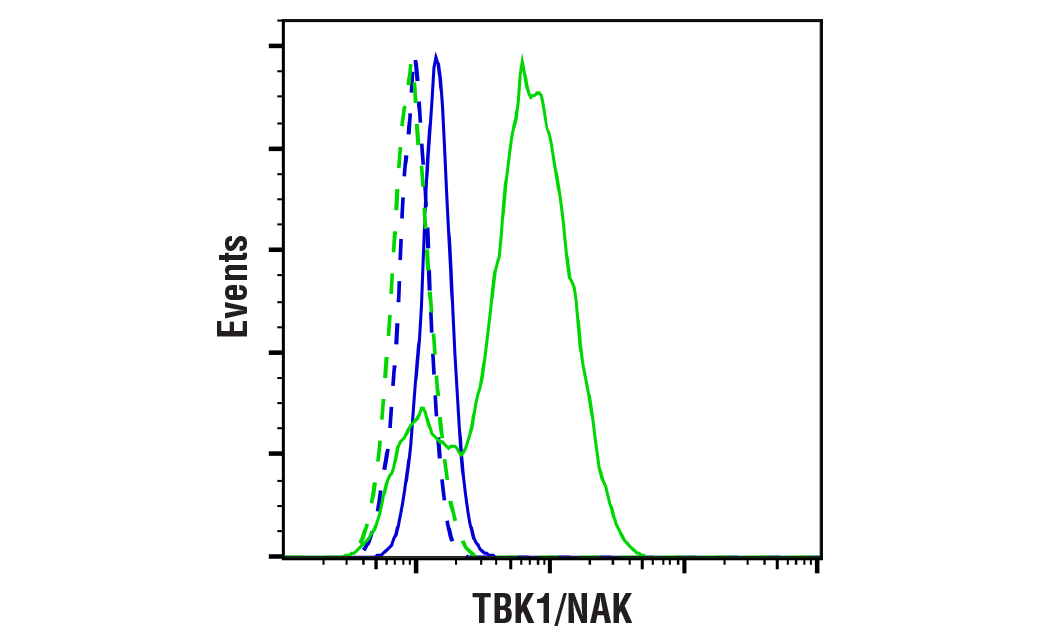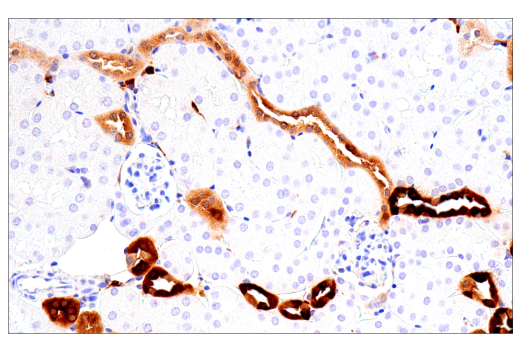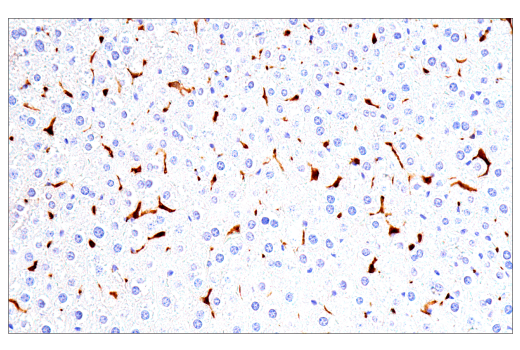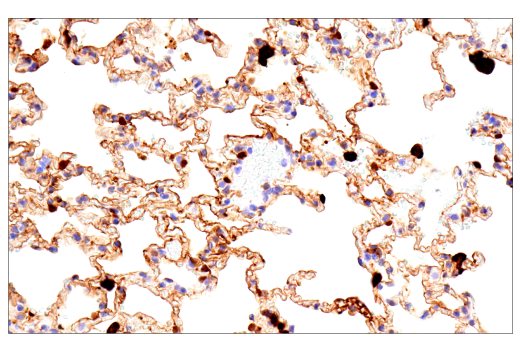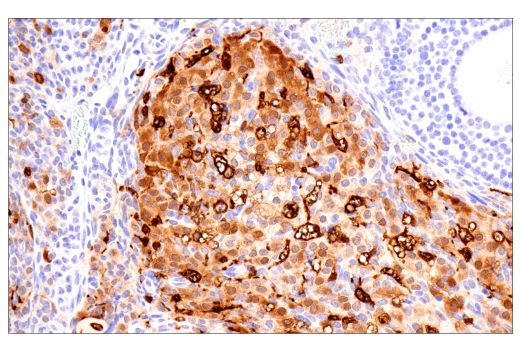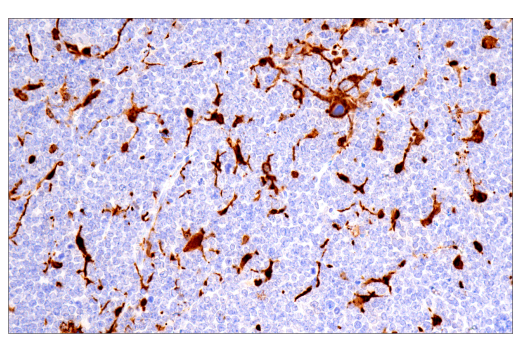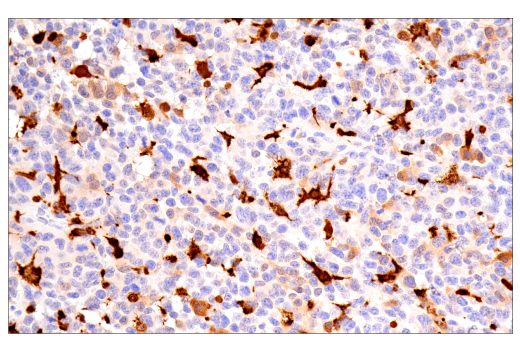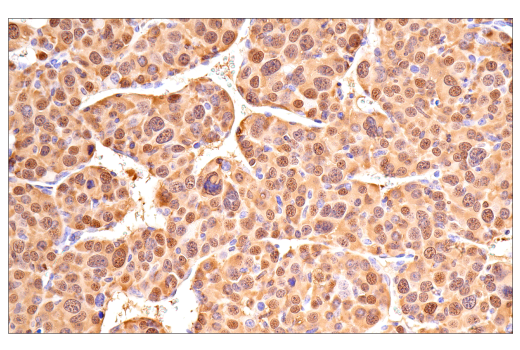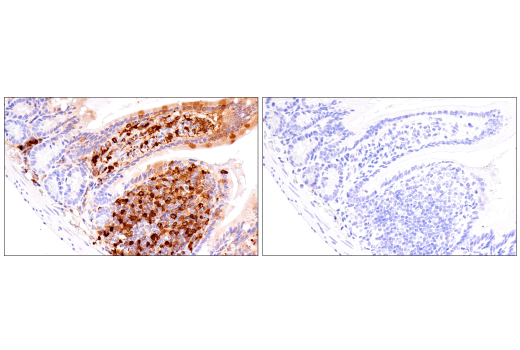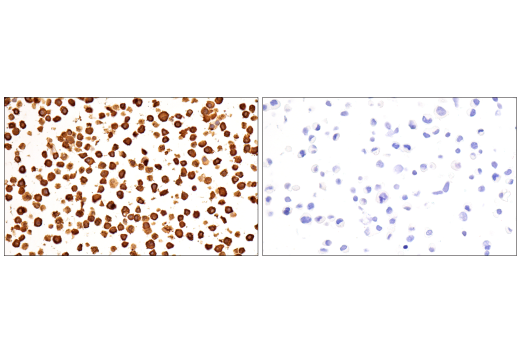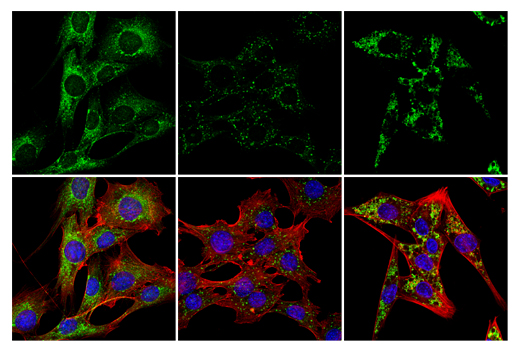| Product Includes | Product # | Quantity | Mol. Wt | Isotype/Source |
|---|---|---|---|---|
| LRSAM1 (D1O5S) Rabbit mAb | 28405 | 20 µl | 84 kDa | Rabbit IgG |
| Galectin-3/LGALS3 (E7B6R) Rabbit mAb | 89572 | 20 µl | 28 kDa | Rabbit IgG |
| NDP52 (D1E4A) Rabbit mAb | 60732 | 20 µl | 52, 60 kDa | Rabbit IgG |
| TAX1BP1 (D1D5) Rabbit mAb | 5105 | 20 µl | 92 kDa | Rabbit IgG |
| Atg16L1 (D6D5) Rabbit mAb | 8089 | 20 µl | 66, 68 kDa | Rabbit IgG |
| Phospho-Atg16L1 (Ser278) (E7K6H) Rabbit mAb | 45511 | 20 µl | 68 kDa | Rabbit IgG |
| Phospho-TBK1/NAK (Ser172) (D52C2) XP® Rabbit mAb | 5483 | 20 µl | 84 kDa | Rabbit IgG |
| TBK1/NAK (E8I3G) Rabbit mAb | 38066 | 20 µl | 84 kDa | Rabbit IgG |
| LC3B (E7X4S) XP® Rabbit mAb | 43566 | 20 µl | 14, 16 kDa | Rabbit IgG |
| Anti-rabbit IgG, HRP-linked Antibody | 7074 | 100 µl | Goat |
Please visit cellsignal.com for individual component applications, species cross-reactivity, dilutions, protocols, and additional product information.
Description
The Xenophagy Antibody Sampler Kit provides an economical means of detecting selected targets involved in the process of xenophagy. The kit includes enough antibodies to perform two western blot experiments with each primary antibody.
Storage
Background
Xenophagy provides an important defense against foreign pathogens, such as bacteria and viruses, by targeting them for degradation through autophagy (1-3). Several well-known pathogens can be targeted for degradation through xenophagy, including Salmonella typhimurium, Streptococcus pyogenes, and Mycobacterium tuberculosis, and loss of core autophagy genes can result in enhanced vulnerability to these infections. Pathogens are generally targeted to LC3B or other Atg8 family members localized on autophagosome membranes. Sequestosome 1/p62-like receptors (SLRs) function as cargo receptors through ubiquitin-mediated interactions along with LIR-domain interactions with Atg8 proteins on the autophagosome. The SLR TAX1BP1 is recruited to ubiquitylated Salmonella and plays a key role in xenophagy (4). Another SLR NDP52 has also been reported to be required for xenophagy of several pathogens (5,6). LRSAM1 is an E3 ubiquitin ligase with a leucine-rich repeat recognized by microbial ligands and recruits NDP52 (7). In addition, galectins are a family of cytosolic lectins that are associated with phagophores and bacteria. Galectin-3 is recruited to bacterial membranes and is important for protection against Mycobacterium tuberculosis (8). TBK1 is a serine/threonine kinase that plays a major role in controlling autophagy by targeting substrates in the SLR family and the maturation of autophagosomes. TBK1 is phosphorylated at Ser172 within its activation loop, which is required for its kinase activity (9). Atg16L1 is a component of the Atg12-Atg5 conjugation system required for autophagosome maturation (10,11). ULK1-mediated phosphorylation of Atg16L1 at Ser278 promotes xenophagy (12).
- Reggio, A. et al. (2020) Exp Cell Res 396, 112276.
- Levine, B. (2005) Cell 120, 159-62.
- Deretic, V. et al. (2013) Nat Rev Immunol 13, 722-37.
- Tumbarello, D.A. et al. (2015) PLoS Pathog 11, e1005174.
- Verlhac, P. et al. (2015) Cell Host Microbe 17, 515-25.
- Fan, S. et al. (2020) Int J Mol Sci 21, 2008. doi: 10.3390/ijms21062008.
- Huett, A. et al. (2012) Cell Host Microbe 12, 778-90.
- Kumar, S. et al. (2017) Autophagy 13, 1086-1087.
- Kishore, N. et al. (2002) J Biol Chem 277, 13840-7.
- Fujita, N. et al. (2008) Mol Biol Cell 19, 2092-100.
- Mizushima, N. et al. (2003) J Cell Sci 116, 1679-88.
- Alsaadi, R.M. et al. (2019) EMBO Rep 20, e46885.
Background References
Trademarks and Patents
使用に関する制限
法的な権限を与えられたCSTの担当者が署名した書面によって別途明示的に合意された場合を除き、 CST、その関連会社または代理店が提供する製品には以下の条件が適用されます。お客様が定める条件でここに定められた条件に含まれるものを超えるもの、 または、ここに定められた条件と異なるものは、法的な権限を与えられたCSTの担当者が別途書面にて受諾した場合を除き、拒絶され、 いかなる効力も効果も有しません。
研究専用 (For Research Use Only) またはこれに類似する表示がされた製品は、 いかなる目的についても FDA または外国もしくは国内のその他の規制機関により承認、認可または許可を受けていません。 お客様は製品を診断もしくは治療目的で使用してはならず、また、製品に表示された内容に違反する方法で使用してはなりません。 CST が販売または使用許諾する製品は、エンドユーザーであるお客様に対し、使途を研究および開発のみに限定して提供されるものです。 診断、予防もしくは治療目的で製品を使用することまたは製品を再販売 (単独であるか他の製品等の一部であるかを問いません) もしくはその他の商業的利用の目的で購入することについては、CST から別途許諾を得る必要があります。 お客様は以下の事項を遵守しなければなりません。(a) CST の製品 (単独であるか他の資材と一緒であるかを問いません) を販売、使用許諾、貸与、寄付もしくはその他の態様で第三者に譲渡したり使用させたりしてはなりません。また、商用の製品を製造するために CST の製品を使用してはなりません。(b) 複製、改変、リバースエンジニアリング、逆コンパイル、 分解または他の方法により製品の構造または技術を解明しようとしてはなりません。また、 CST の製品またはサービスと競合する製品またはサービスを開発する目的で CST の製品を使用してはなりません。(c) CST の製品の商標、商号、ロゴ、特許または著作権に関する通知または表示を除去したり改変したりしてはなりません。(d) CST の製品をCST 製品販売条件(CST’s Product Terms of Sale) および該当する書面のみに従って使用しなければなりません。(e) CST の製品に関連してお客様が使用する第三者の製品またはサービスに関する使用許諾条件、 サービス提供条件またはこれに類する合意事項を遵守しなければなりません。
